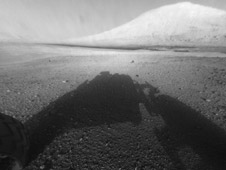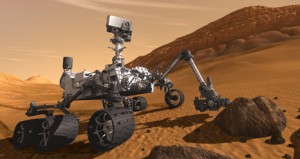Curiosity Has Landed!

It has been years in the making; hundreds of engineers and scientists and debate after debate of where and how to land - but the rover Curiosity has finally touched down and is working properly.
The rover, equipped with not only a multitude of cameras (17 in all), but a complete assortment of analysis equipment one might find only in an advanced, well-funded research lab here on earth, will be providing us with generations worth of information about the red planet. The next step (currently underway) is a multitude of "heath" tests to determine if all equipment survived the voyage and the incredible landing. A few fun facts:
- The rover is powered by a radioisotope thermoelectric generator (RTG) which uses non-fissile plutonium which can power the rover for 14 years or more (the mission is expected to last two years).
- The pattern left by the tracks in the sand is actually morse code for "JPL" (Nasa's Jet Propulsion Lab).
- Chemcam (the large "head" of the rover which makes it a bit more "personable"), which can analyze the composition of rocks as far as 7m away, was almost not included twice; once due to a fire, the other due to budget cuts.
- Mars temperature can vary from about -127C to +30C
Thanks for helping to keep our community civil!
Notify staff privately
You flagged this as spam. Undo flag.Flag Post
It's Spam
This post is an advertisement, or vandalism. It is not useful or relevant to the current topic.
This post is an advertisement, or vandalism. It is not useful or relevant to the current topic.
You flagged this as spam. Undo flag.Flag Post




